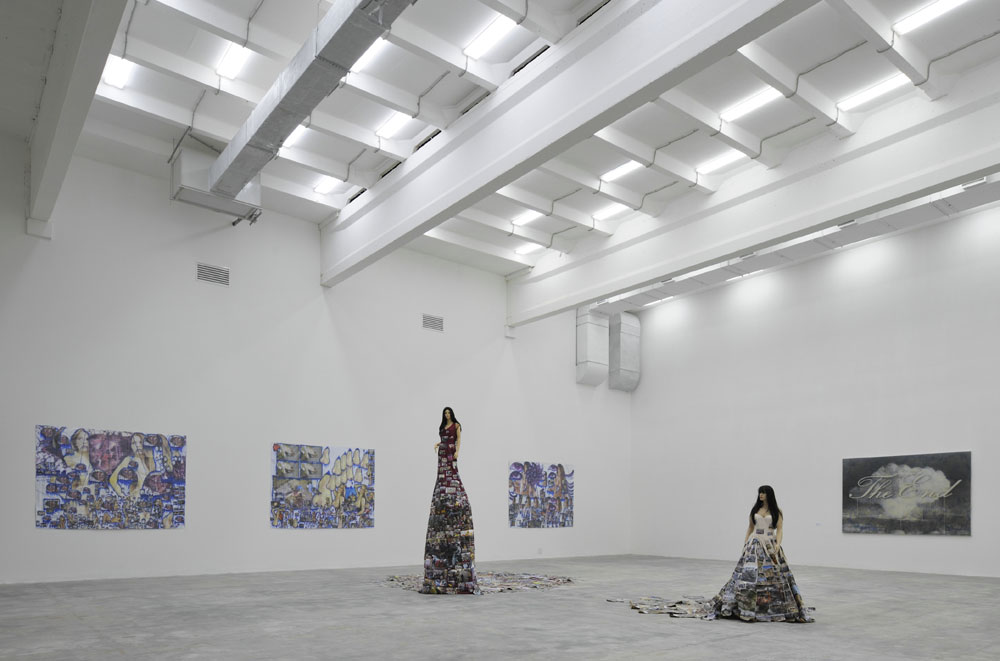
Artists Confront Global Turmoil at the Toronto Biennial

### Exploring the Toronto Biennial of Art 2024: *Precarious Joys*
#### A Beacon of Art in Turbulent Times
The 2024 **Toronto Biennial of Art** (TBA), under the evocative theme of *Precarious Joys*, offers a lens through which to view our fragile world. As curated by Dominique Fontaine and Miguel A. López, this year’s iteration takes a closer look at the uncertain political and ecological reality we face today. Through a blend of local and global artistry, housed in venues across Toronto, visitors are invited to explore themes such as migration, land preservation, resistance, and identity in a world increasingly marked by impermanence.
Spanning eleven carefully selected venues, the Biennial features contributions from over thirty-five artists and collectives with roots in Canada, the Caribbean, Asia, Latin America, and beyond. These artists bring forth pressing questions and heartfelt reflections, addressing both global and deeply personal challenges.
As Fontaine and López write in their curatorial statement, *Precarious Joys* is built upon six essential concepts that have guided artists’ explorations: **joy, precarity, home, polyphony, solace**, and the power of being **”coded”**—expressing oneself indirectly in times of societal tension. Each directive encapsulates how artistry continues to shape political awareness and frame the collective pursuit of a better, more inclusive world.
#### A Celebration of Collective Identity
After stepping into Toronto’s key transit hubs like Union Station and Pearson Airport, visitors immediately encounter a piece emblematic of those collective hopes. **Morris Lum**, through his series *Tong Yan Gaai* *(Chinatown in Cantonese)*, greets viewers with lightbox photographs that honor Toronto’s Chinese community. Lum’s works foreground the layered histories of migration, much of which dates back to the Canadian railway’s development, an instrument that paradoxically built up communities while furthering displacement. His photos capitalize on archival imagery to suggest a rich, ever-evolving dialogue between history and belonging.
This sense of layered identity echoes throughout the Biennial’s broader programming. In the bustling streets of the city center, works like **Léann Herlihy’s** billboard-sized self-portrait or **Rajni Perera’s** bamboo-laden spacecraft sculpture—both monumental in their energy—redefine narratives on queerness, colonialism, and immigration. Herlihy’s position on the fringes of traditional space speaks to the transformative power of the queer and trans community, while Perera’s modern spacecraft mocks dominant Western views of technological and spatial supremacy by melding Buddhist iconography with space travel.
#### Artistic Responses to Environmental Devastation
At the **Collision Gallery**, two jarring exhibitions by **Tessa Mars** and **Rajni Perera** delve into environmental destruction, portraying how displacement is not merely political but also ecological. Mars’ work, titled *All Islands Touch* (2024), and Perera’s *Joyous Procession / Infinite Serpent* (2024) challenge visitors to confront humans morphing through landscapes ravaged by negligence, where the once-stable divisions between air, earth, and water no longer hold.
Perera and Mars are not alone in this endeavor. **Ahmed Umar’s** *Truth Bears No Scandal* (الـواضِح مو فـاضِح)* (2024) magnifies the import of re-examining historical truths, particularly those erased by societal taboos. Umar revisits old Sudanese love songs for same-sex couples, reclaiming these sentiments for a modern audience that risks forgetting them. His intricate medley of paintings and sculptures injects queer joy back into histories threatened by criminalization and erasure.
The works on display at the Biennial also highlight how past myths remain relevant in contemporary society. **Citra Sasmita’s** *Timur Merah Project XII: Light Speed and Revelation* reimagines Balinese myths within a post-colonial context, positioning them as important counter-narratives to modern Western ideologies of truth. Through these pieces, ancient storytelling mechanisms intertwine with present-day anxieties, heightening the tension between memory and modernity.
#### Crafting Artistic Instruments of Heritage
In the industrial setting of the **Auto BLDG**, textile installations mirror the themes of erosion and salvation. Perhaps no work better exemplifies this tension than **Elina Waage Mikalsen’s** *I Lay My Ear Against the Weave’s Ear* (2019–ongoing). Mikalsen takes her grandmother’s loom and repurposes it in an intricate installation, dismantling it and turning it into a large harp-like instrument. By playing this instrument with rocks and pairing it with song, Mikalsen transforms heritage into an auditory dialogue that explores both discord and connection.
Nearby, **Stina Baudin’s** use of textiles melds craft art and data analysis. The vibrant